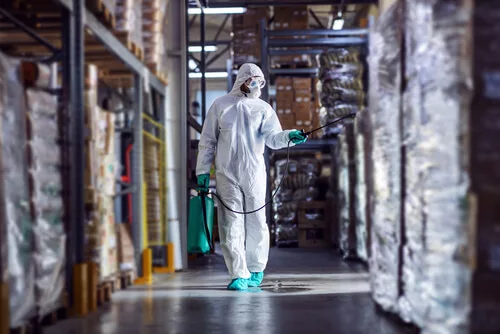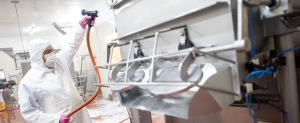Decontamination is essential to maintaining safety and hygiene in various industrial and commercial environments. It involves the process of cleaning and sanitizing an area, object, or person to remove or neutralize hazardous substances like chemicals, biological agents, or radiation.
Given the importance and intricacy of the emergency response process, specialized decontamination cleaning services are often needed to get the job done effectively. We’re going to look at the different types of decontamination cleaning services and learn about when to employ each service.
Types of Decontamination Cleaning Services
There are as many types of decontamination as mistakes or accidents to be had. That’s why it’s important to know the waste and decontaminant services available.
Chemical
In an industrial setting, a chemical spill requires immediate chemical decontamination to neutralize the hazardous substance and prevent further damage.
This type of decontamination involves the use of chemicals to neutralize hazardous substances. It’s commonly used in industrial settings and laboratories where chemical spills have occurred.
Different chemical agents like oxidizers, solvents and detergents are used, depending on the type of contaminant.
Biological
Biological decontamination is mandatory in healthcare settings where there is potential exposure to pathogens. This is particularly critical during outbreaks of infectious diseases.
Employed in environments where biological contaminants like bacteria, viruses, or fungi pose a risk, this method is also essential in research labs and food processing units. Antimicrobial agents, ultraviolet light or high-temperature steam may be used in the process.
Radiological
Industries or research facilities dealing with radioactive materials must have radiological decontamination protocols in place.
Used in environments contaminated by radioactive materials, this decontamination process usually involves removing the contaminated material and treating the area with specialized chemical agents.
Physical
Older buildings may have lead paint, asbestos, or mold. Physical decontamination is often sufficient for these settings.
Sometimes, simple washing, scrubbing, or vacuuming can remove hazardous substances. Physical decontamination is common in construction sites and homes where dust or asbestos may be a concern.
Thermal
All medical equipment must be thermally decontaminated to ensure it’s free from pathogens.
Using heat to destroy contaminants, this strategy is typically employed in medical facilities. Thermal decontamination can include both autoclaving and dry heat sterilization.
Ultrafiltration and Microfiltration
If a water supply gets contaminated, ultrafiltration and microfiltration can effectively remove hazardous particles.
Used mainly in water treatment and some industrial processes, these procedures uses membrane technology to separate or remove contaminants.
Fumigation
Whether it’s a pest problem in a warehouse or microbial contamination in an agricultural field, fumigation might be the most effective solution. In extreme cases, especially for large areas like those warehouses or agricultural fields, fumigants may be used to decontaminate air and surfaces.
Let Specialized Waste Services Come to Your Aid
Understanding the different types of decontamination cleaning services and when to utilize them can significantly impact safety and health, particularly in settings prone to hazardous material exposure. Companies specializing in these procedures, like Specialized Waste Services, have the experience and expertise to ensure your decontamination is carried out effectively and in compliance with regulations. Contact Specialized Waste Systems today, and let’s start getting your property sparkling clean once again.




